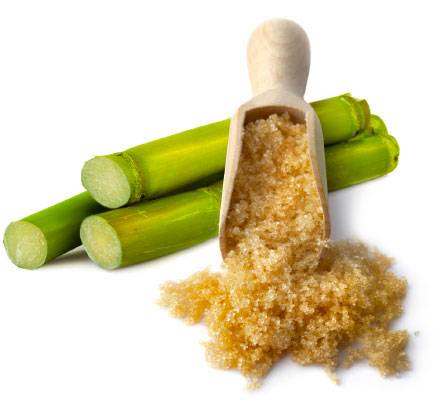The Trip of Cane Sugar Processing: From Harvest to Crystals
An Extensive Overview to the Environmental Influence and Sustainability Practices in Walking Cane Sugar Processing
The ecological influence of cane sugar handling provides an intricate variety of obstacles that warrant mindful exam. From dirt degradation and excessive water usage to the carbon footprint related to growing and production, the consequences of typical methods are significant. On the other hand, the adoption of ingenious sustainability steps uses a path towards much more responsible manufacturing techniques. Recognizing the interaction in between these issues is crucial for stakeholders in the market. What certain methods can be implemented to strike a balance in between performance and environmental stewardship? The answers hinge on a better consider both the challenges and prospective options.
Summary of Walking Stick Sugar Processing
Cane sugar processing involves a series of organized steps that transform sugarcane into polished sugar. At first, collected sugarcane is transferred to processing facilities, where it goes through cleansing to eliminate soil and debris. Following this, the walking stick is squashed to remove juice, which is then made clear by removing impurities through heating and the addition of lime.
The cleared up juice undergoes dissipation, where water is eliminated to concentrate the sugar web content. These crystals are divided from the remaining syrup utilizing centrifugation, resulting in raw sugar.
The final item is after that dried out and packaged for distribution. Throughout this whole procedure, preserving effectiveness and quality assurance is important to guarantee the sugar satisfies market requirements. Each action in walking stick sugar handling not just adds to the end product yet additionally has effects for source usage and waste generation, establishing the stage for discussions on sustainability and environmental impacts connected with sugar production.
Environmental Difficulties of Production
The production of cane sugar offers numerous substantial ecological difficulties that warrant attention. One primary issue is the considerable use of agrochemicals, including fertilizers and chemicals, which can result in soil destruction, biodiversity loss, and contamination of neighborhood water sources. The drainage from sugarcane areas usually carries these chemicals into neighboring ecological communities, disrupting marine life and impacting the health and wellness of areas reliant on these water bodies.
An additional obstacle is the high energy consumption related to sugarcane processing. The boiling and refining stages call for considerable warm, largely produced by burning nonrenewable fuel sources, adding to greenhouse gas emissions. In addition, the extensive acreage needed for sugarcane cultivation can lead to logging and habitat devastation, additional intensifying environment modification and harmful wildlife.
Moreover, the labor techniques in some areas elevate honest problems, as workers might deal with inadequate working conditions and poor wages. This circumstance typically perpetuates a cycle of hardship in neighborhood neighborhoods. Cane Sugar Processing. Resolving these environmental difficulties is essential for establishing more lasting practices in walking stick sugar manufacturing, ultimately benefiting both the setting and the communities included in this sector
Water and Land Usage Impact
Water resources and land application are crucial parts in the cane sugar industry that substantially influence the environment. The growing of sugarcane needs significant water input, with estimates suggesting that it can eat approximately 2,000 liters of water per kilogram of sugar created. This extensive use water often results in exhaustion of neighborhood water resources, impacting not only the sugarcane vineyards Home Page yet additionally surrounding environments and areas that count on the same water sources for agriculture and domestic use.

Moreover, land use for sugarcane farming can result in logging and the conversion of natural habitats into monoculture haciendas. This method lessens biodiversity, disrupts regional ecosystems, and contributes to dirt degradation. The growth of sugarcane areas commonly intrudes on valuable agricultural land, developing competitors for resources between food and biofuel manufacturing.
Lasting practices, such as enhancing watering strategies and applying crop turning, are vital to reduce these influences. By taking on more efficient water usage and land administration approaches, the cane sugar industry can minimize its eco-friendly footprint, ensuring a balance between farming productivity and environmental conservation.
Greenhouse Gas Emissions
Greenhouse gas discharges represent a significant ecological concern within the walking cane sugar handling market, particularly as agricultural techniques expand to meet international need. The farming of sugarcane, a crop that prospers in exotic climates, depends greatly on synthetic fertilizers and chemicals, which add to laughing gas exhausts. Furthermore, land-use adjustments, including logging for brand-new sugarcane haciendas, launch co2 kept in plants and soil.
During handling, energy consumption is an additional major source of greenhouse gas emissions - Cane Sugar Processing. Numerous sugar mills use nonrenewable fuel sources to power equipment and produce heat, causing significant carbon footprints. In addition, the transport of raw sugarcane and completed products includes layers of discharges through gas combustion in lorries
This entails assessing present agricultural techniques, refining methods, and transportation systems to recognize locations for improvement and mitigation. Attending to greenhouse gas exhausts is important for promoting an extra lasting cane sugar industry in a changing environment.

Lasting Practices and Innovations
Sustainable techniques and advancements are increasingly essential in the walking stick sugar handling sector as stakeholders seek to lower environmental influences while preserving performance. One considerable advancement is the application of incorporated crop monitoring, which optimizes source use by webpage integrating soil monitoring, pest control, and crop turning techniques. This strategy boosts return while minimizing chemical inputs and protecting dirt health and wellness.
In addition, the adoption of sustainable power resources, such as biomass from sugarcane deposits, has gotten grip - Cane Sugar Processing. By converting waste products right into power, processing facilities can minimize their dependence on nonrenewable fuel sources, thus decreasing greenhouse gas exhausts
Water management practices have actually great site likewise seen enhancements with the recycling and reusing of water in handling plants, considerably lowering freshwater consumption. Developments in innovation, such as accuracy farming, make it possible for farmers to keep track of crop health and wellness and resource use better, making certain lasting cultivation practices.
Moreover, qualification programs like Fair Trade and Jungle Alliance encourage environmentally accountable farming techniques and advertise social equity within the supply chain. By embracing these lasting methods and innovations, the walking cane sugar handling sector can enhance its resilience and contribute positively to environmental stewardship.
Verdict
The ecological influence of walking cane sugar handling provides considerable difficulties, including soil destruction, high water intake, and greenhouse gas exhausts, together with ethical concerns related to labor techniques. Resolving these concerns with sustainable practices, such as incorporated plant administration, renewable power fostering, and water recycling, is necessary. By promoting environmentally accountable and socially fair techniques in sugar production, the sector can alleviate its unfavorable effects, making sure a more lasting future for both areas and communities involved in this field.
Walking stick sugar handling includes a series of methodical steps that change sugarcane into polished sugar. Each step in walking cane sugar processing not just contributes to the last item but additionally has implications for source use and waste generation, establishing the stage for discussions on sustainability and ecological effects linked with sugar production.
Greenhouse gas exhausts represent a considerable environmental worry within the cane sugar processing market, specifically as farming techniques broaden to fulfill worldwide need.Sustainable techniques and advancements are significantly essential in the walking stick sugar processing industry as stakeholders look for to reduce environmental effects while keeping efficiency.The ecological influence of cane sugar processing presents considerable obstacles, including soil deterioration, high water intake, and greenhouse gas emissions, alongside honest worries connected to labor practices.